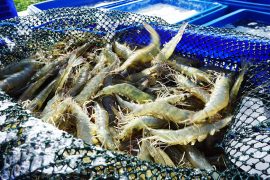
Climate change is happening too fast for some species to adapt
No one enjoys a rude awakening, especially if it’s a jarring climate change alarm clock. Plants, like humans, need time to adjust to new conditions. But what happens when climate change hits the snooze button on the slow pace of evolution?
We’re about to unravel the story of the Arctic Siberian primrose, a hardy plant whose existence is threatened by rapid global warming and its struggle to adapt.
Arctic Siberian Primrose
Perched on the frosty edges of the Bothnian Bay and Arctic Ocean, the Siberian primrose has been battling the odds for centuries, ever resilient.
However, climate change is a formidable enemy. How can plants adapt if they’re nailed to the ground, unable to shift to more favorable environments, and evolution seems to be moving in slow motion?
Threatened by rapid climate change
Researchers from the Finnish Museum of Natural History and the University of Helsinki set out to investigate.
“The Siberian primrose is a good example of a species threatened by rapidly advancing climate change. It cannot migrate to more favorable conditions due to geographic constraints, leaving adaptation in its current habitat as its only survival option,” said study co-author Professor Marko Hyvärinen.
The team found out that the survival of the Siberian primrose hinges on one crucial condition – we must slow down climate change fast enough to give the flowers the time they need to evolve.
A lifeline for wild species
Now, you might be wondering, how do we put the brakes on climate change? Enter the Paris Agreement. Our prime suspect, climate change, can only be contained if we can stick to the targets established in this global climate accord. But that’s no easy feat.
“Our research suggests that the evolutionary potential of wild species is seriously limited in the face of rapidly advancing climate change. This means that the future of many species is at stake, unless climate change is effectively curbed,” said study lead author Anniina Mattila.
Geographical constraints and climate change
Species limited to specific geographical regions, like the Siberian primrose, have particularly high stakes in this game of climate change roulette. They’re boxed in by unsuitable habitats, often with no option but to adapt or perish.
Proactive conservation measures, such as targeted translocations and adaptive capacity studies, can offer a lifeline, but they can only go so far. Ultimately, the battlefront is climate change mitigation.
Adaptive management strategies
As the clock ticks on climate change, adaptive management offers hope for species confined by geographical limits.
This proactive approach is a dynamic strategy that involves continuously revisiting and adjusting conservation practices based on the latest data and developments.
For the Siberian primrose, this could involve habitat restoration, managing genetic diversity, or even assisted migration to new locales where they can thrive. By doing so, conservationists aim to bolster the plant’s resilience against the looming threat of environmental shifts.
Advocacy and climate change awareness
In the global climate crisis, public engagement is key to driving change. Raising awareness about endangered species like the Siberian primrose isn’t just for scientists and policymakers; everyone can help.
By sharing knowledge and fostering a sense of urgency, people worldwide can contribute to conservation.
This can include supporting eco-friendly policies, joining citizen science projects, or sharing information in their communities. Together, our collective actions can create significant momentum for a more sustainable planet.
Climate change: A global call to action
Here’s the ultimate reality check. The Intergovernmental Panel on Climate Change (IPCC) reports that the global temperature has already risen by 1.1 degrees Celsius (2.0 degrees Fahrenheit) since the pre-industrial era, with the Arctic warming up to four times faster.
Turning down the heat on climate change isn’t just about saving our human homes. It’s also about giving the silent flora and fauna – the Arctic Siberian primroses of the world – a fighting chance to adapt and thrive as nature intended.
Learning from the research
So, what active steps can we take today? It’s not just about recycling and using less plastic. It’s a much broader viewpoint. Eating less meat, conserving water, reducing air travel, and switching to renewable energy sources are all powerful ways to fight climate change.
Every little action counts. Every degree we can dial down on global warming could be the lifeline species like the Arctic Siberian primrose need to survive and continue their evolutionary journey. And that could be the most significant legacy we leave behind.
The study is published in the journal Proceedings of the Royal Society B Biological Sciences.
—–
Like what you read? Subscribe to our newsletter for engaging articles, exclusive content, and the latest updates.
Check us out on EarthSnap, a free app brought to you by Eric Ralls and Earth.com.
—–













